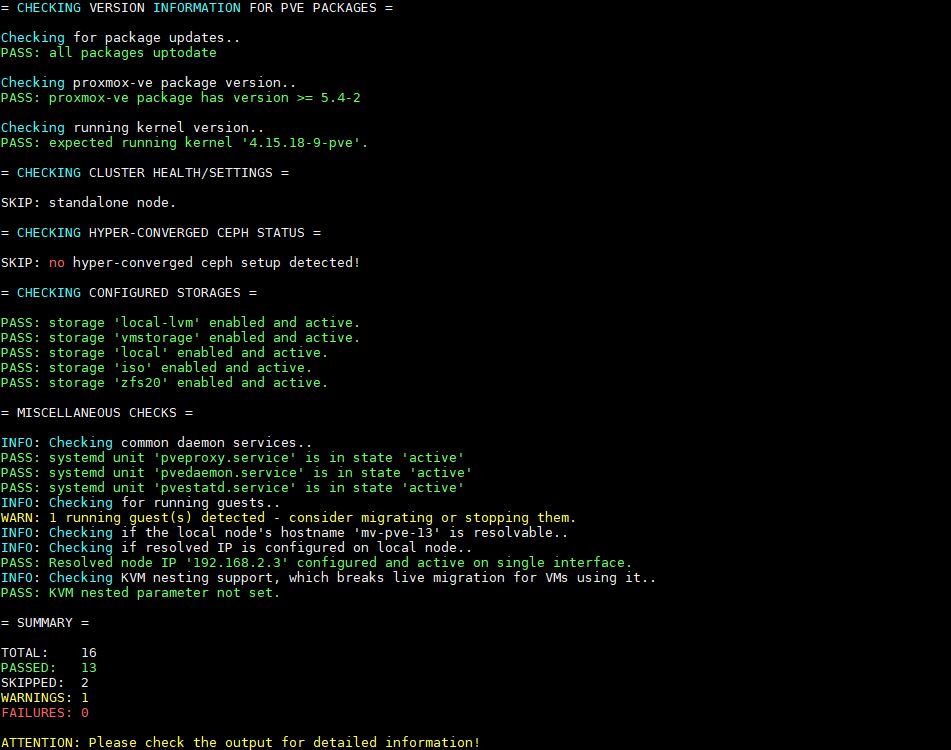Proxmox VE 6.0 is now out and is ready for new installations and upgrades. There are a number of features underpinning the Linux-based virtualization solution that are notable in this major revision. Two of the biggest are the upgrade to Debian 10 “Buster” as well as Ceph 14.2 “Nautilus”. For years, the Proxmox VE team has been pushing the integration of new Linux kernels and the accompanying virtualization and open source storage components. That is evident in this release.
Proxmox VE 6.0 Updates
You can read the full Proxmox VE 6.0 updates at the changelog. We wanted to pull out a handful of our highlights understanding that our highlights may be different than those for many of our readers. Here are a few of our highlights:
- Ceph Nautilus 14.2.x
- Better performance monitoring for rbd images through `rbd perf image iotop` and `rbd perf image iostat`.
- OSD creation, based on ceph-volume: integrated support for full disk encryption of OSDs.
- Improved Ceph administration via GUI
- A cluster-wide overview for Ceph is now displayed in the ‘Datacenter View’ too.
- The activity and state of the placement groups (PGs) is visualized.
- The version of all Ceph services is now displayed, making detection of outdated services easier.
- Configuration settings from the config file and database are displayed.
- You can now select the public and cluster networks in the GUI with a new network selector.
- Easy encryption for OSDs with a checkbox.
- ZFS Improvements
- ZFS 0.8.1
- Support for ZFS on UEFI and on NVMe devices in the installer
- Linux Kernel updated 5.0 Kernel. This is based off the Ubuntu 19.04 “Disco” kernel with ZFS.
Many of these changes bring updates to functionality to Proxmox VE 6.0 due to improvements in their upstream projects. Moving from Proxmox VE version to version is relatively simple in most cases. If Ceph is being used for hyper-converged deployments, then that usually involves extra steps. We again urge our readers to review the release notes.
Upgrading from Proxmox VE 5.x to Proxmox VE 6.x
The Proxmox VE team has new tools to help in the migration process with this generation, further showing the status of their project. An example of this is the new pve5to6 tool. With pve5to6 you can see exactly what is running, and what may need to be changed.

This tool tells one what may need to be done before the upgrade, and also helps generate which decision tree points must be followed as one performs the upgrade process using the Wiki documentation.
Final Words
Proxmox VE is turning into the premier Debian-based distribution for those who want to use KVM virtualization like public cloud providers as well as scale-up storage like ZFS or scale-out storage like Ceph for a hyper-converged deployment.
In the future, we would like to see the Proxmox VE team take the next step of making a competitive GUI for creating network shares even though there are containers that can do this. We would also like to see the Proxmox VE team expand on the direction of the pve5to6 tool and further improve major version upgrade processes.
The Proxmox VE team has commercial support options which include access to enterprise repositories. It is always good to support the open source projects you use.
While it is still a smaller project, Proxmox VE 6.0 is now the standard to which other Linux virtualization solutions are held. For many environments, Proxmox VE 6.0 is a direct and less costly replacement for tools like VMware ESXi.





Don’t forget another alternative, Xen based: XCP-ng :) https://xcp-ng.org
Honestly, I don’t even consider Proxmox VE anywhere close to either VMWare ESXi or Xen/XCP-NG. Both of those are much more light weight hypervisors with external control consoles/interfaces.
What Proxmox VE does directly compete with is Microsoft Server with Hyper-V. A full service OS/GUI environment with ease of entry/use.
I use proxmox now and used esx in the past. Although Debian is more heavyweight than esx the tools to manage hosts is equal to those running as a guest. This means a more familiar environment to manage which is worth a lot more as i don’t need to have or hire specialist skills.
In what way is KVM (which Proxmox is based on) not as ‘lightweight’ as ESXi?
Only that the Debian server that’s delivered to support KVM is less light than the Linux version on ESXI, however you can install proxmox on lighter Linux like FreeBSD, but for a datacenter, it really doesn’t change much.
Kvm is used by Amazon now, they dropped the use of Xen.
Performance tests are always faster on KVM then XEN for same hardware.